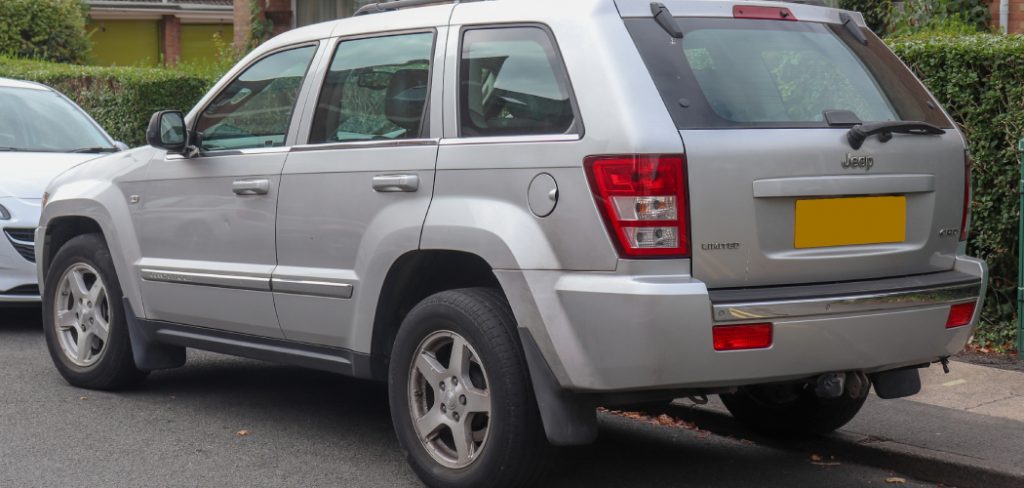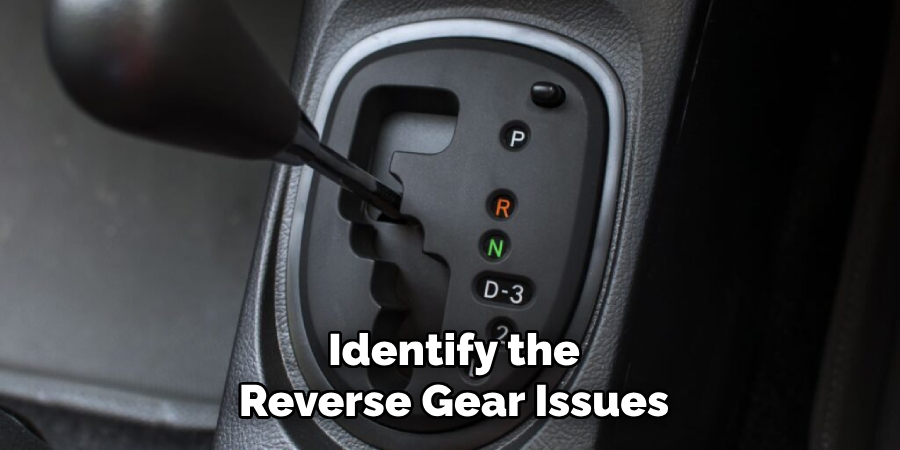Experiencing issues with your Jeep’s reverse gear can be frustrating and inconvenient, especially if it poses challenges to your everyday driving and parking situations.

Whether your Jeep struggles to engage in reverse or you hear unusual noises while attempting to shift, these are clear indicators that a problem might exist. Addressing these issues promptly is essential to maintaining your vehicle’s performance and preventing more serious transmission damage.
This guide will outline the common causes of reverse gear problems and provide step-by-step instructions on how to fix the reverse on a jeep.
Understanding the Reverse Gear System in a Jeep
The reverse gear system in a Jeep, like most vehicles, involves several key components that work together to enable backward motion. At the core of this system is the transmission, which uses a series of gears to manage the vehicle’s speed and torque.
In manual transmissions, the reverse gear is typically engaged manually by shifting the gear lever into the designated position, causing the gear mechanism to move into reverse mode.
On the other hand, automatic transmissions use a torque converter and a complex system of clutches and planetary gears to achieve the same result.
Understanding how these systems interact provides valuable insights into diagnosing and addressing reverse gear issues. Knowing the basic mechanics of your Jeep’s transmission can not only aid in identifying specific problems but also in applying the correct solutions effectively.
Common Issues with the Reverse Gear in a Jeep
When dealing with reverse gear problems in a Jeep, there are several issues that drivers might encounter.
One common problem is the transmission fluid being low or contaminated, which can lead to insufficient lubrication of the components, causing grinding noises or difficulty engaging the gear.
Another potential issue is a malfunctioning shift linkage, which might result from wear and tear or misalignment, preventing the gear from being properly engaged.

Additionally, worn-out synchro rings in manual transmissions can hinder smooth shifting to reverse, while in automatic transmissions, damaged solenoids or clutches can also contribute to reverse gear difficulties.
Moreover, electronic sensors and components that are part of modern transmission systems may fail, leading to erratic behavior or inability to shift into reverse.
Identifying these common issues is the first step toward effectively troubleshooting and resolving any reverse gear problems your Jeep may have.
10 Methods How to Fix the Reverse on a Jeep
1. Understand the Transmission System
To effectively address issues with the reverse gear in your Jeep, it is essential to first understand the vehicle’s transmission system. Depending on the model and year, Jeep vehicles typically come equipped with either an automatic or a manual transmission.
In automatic transmissions, the reverse gear is part of a complex hydraulic system that relies on various components, including the transmission fluid, solenoids, and the valve body.
Manual transmissions, on the other hand, involve a simpler gear engagement process, but they can still experience problems such as worn synchronizers or linkage issues.
Familiarizing yourself with how your specific transmission works will provide a solid foundation for diagnosing and fixing reverse gear problems.
2. Check the Transmission Fluid Level and Condition
One of the most common reasons for reverse gear issues in a Jeep is low or dirty transmission fluid. The fluid not only lubricates the transmission components but also plays a critical role in hydraulic pressure, which is necessary for gear engagement.
Start by checking the transmission fluid level using the dipstick, typically located near the rear of the engine bay.
Ensure the vehicle is on a level surface and that the engine is running when you check the fluid level. If the fluid is low, add the appropriate type of transmission fluid specified in your owner’s manual.
Additionally, inspect the fluid’s color and smell. Healthy transmission fluid should be a bright red color and have a slightly sweet smell. If the fluid appears dark or smells burnt, it may be time to replace it, as dirty fluid can hinder reverse engagement.
3. Inspect the Transmission Linkage
For manual transmission vehicles, the problem may lie within the transmission linkage, which connects the gear shifter to the transmission itself. Over time, this linkage can become worn or misaligned, preventing proper gear engagement.

Begin by visually inspecting the linkage for any signs of damage, such as bends, cracks, or excessive wear. Ensure all connections are secure and not excessively loose.
If you notice any issues, consider adjusting or replacing the linkage components as necessary. In some cases, lubrication of the linkage may also improve its function, ensuring smoother gear shifts into reverse.
4. Examine the Shift Cable
In automatic transmissions, a malfunctioning shift cable can lead to difficulties engaging reverse gear. The shift cable connects the gear shifter to the transmission, allowing you to select different gears.
If the cable is stretched, frayed, or disconnected, it can hinder your ability to shift into reverse. Start by inspecting the shift cable for any visible signs of damage.
If the cable is intact, check for proper adjustment, ensuring it has enough tension to engage the reverse gear. If the cable is damaged or excessively worn, it will need to be replaced. Replacement cables can often be sourced from dealerships or auto parts stores, ensuring compatibility with your specific Jeep model.
5. Check the Transmission Filter
A clogged or dirty transmission filter can restrict fluid flow, leading to issues with engaging reverse. This filter is responsible for trapping contaminants that can accumulate in the transmission fluid over time.
To check the filter, you will need to drop the transmission pan, which typically requires a full transmission fluid change. Once the pan is removed, inspect the filter for debris or damage.
If it appears clogged, replace it with a new one, following the manufacturer’s specifications. While you’re at it, also inspect the transmission pan for any metal shavings or debris, which may indicate internal wear and tear that requires further investigation.
6. Look for Faulty Solenoids
In automatic transmissions, solenoids are critical components that control the flow of transmission fluid and the engagement of various gears. A malfunctioning solenoid can lead to difficulties in engaging reverse.
Use an OBD-II scanner to check for any diagnostic trouble codes related to the transmission. If any codes are present, they may point to faulty solenoids or electrical issues affecting their operation.
If you suspect a solenoid is faulty, you may need to perform further testing, including checking the solenoid’s resistance with a multimeter. Replacing faulty solenoids is often a straightforward process, but it may require dropping the transmission pan to access them.
7. Inspect the Valve Body
The valve body is the heart of the transmission, responsible for directing fluid to the appropriate gears based on input from various sensors and solenoids. A malfunction in the valve body can prevent the transmission from shifting into reverse.
Inspect the valve body for any signs of damage, such as cracks or leaks. If you suspect that the valve body is the issue, you may need to remove it for a more detailed inspection. In some cases, cleaning the valve body or replacing worn components can resolve reverse engagement issues.

8. Assess for Internal Transmission Damage
If all external checks fail to identify the problem, the issue may lie within the internal components of the transmission. Worn gears, damaged clutches, or broken bands can prevent the transmission from engaging reverse properly.
To assess for internal damage, you will need to remove the transmission from the vehicle, which can be a labor-intensive process.
Once removed, a thorough inspection of the internal components is necessary. Look for worn clutches, damaged gears, or signs of overheating.
9. Consult the Owner’s Manual for Specific Procedures
Different Jeep models and years may have specific procedures for troubleshooting and fixing transmission issues. Always refer to your owner’s manual for guidance on the particular systems and components relevant to your vehicle.
The manual can provide detailed diagrams, specifications, and maintenance schedules that will assist you in understanding your Jeep’s unique needs. Additionally, it may offer troubleshooting tips that are specific to your model, helping you identify and resolve reverse engagement issues more efficiently.
10. Seek Professional Assistance for Complex Issues
If, after performing all the checks and repairs, the reverse gear still does not engage properly, it may be time to seek professional assistance.
Transmission issues can often be complex, requiring specialized knowledge and tools for accurate diagnosis and repair. A qualified mechanic or transmission specialist will have the experience to identify and resolve problems that may not be evident to the average vehicle owner.
They can perform comprehensive diagnostic tests, including fluid pressure checks and electrical diagnostics, to pinpoint the exact cause of the reverse malfunction.

Conclusion
Addressing transmission issues, particularly those involving the inability to engage reverse gear, requires a methodical approach. By following the outlined steps, from inspecting the shift cable and solenoids to checking for internal transmission damage, you can identify and potentially resolve the problem.
Always remember that your Jeep’s owner’s manual is an essential resource, offering guidance tailored to your specific model. Thanks for reading, and we hope this has given you some inspiration on how to fix the reverse on a jeep!
